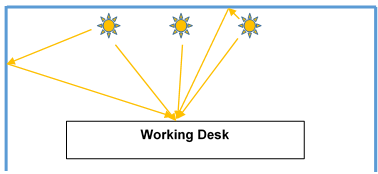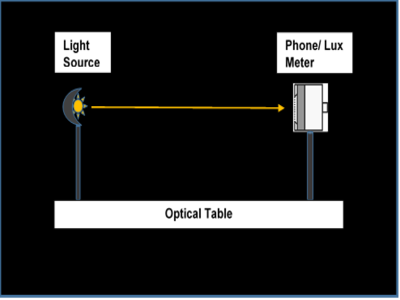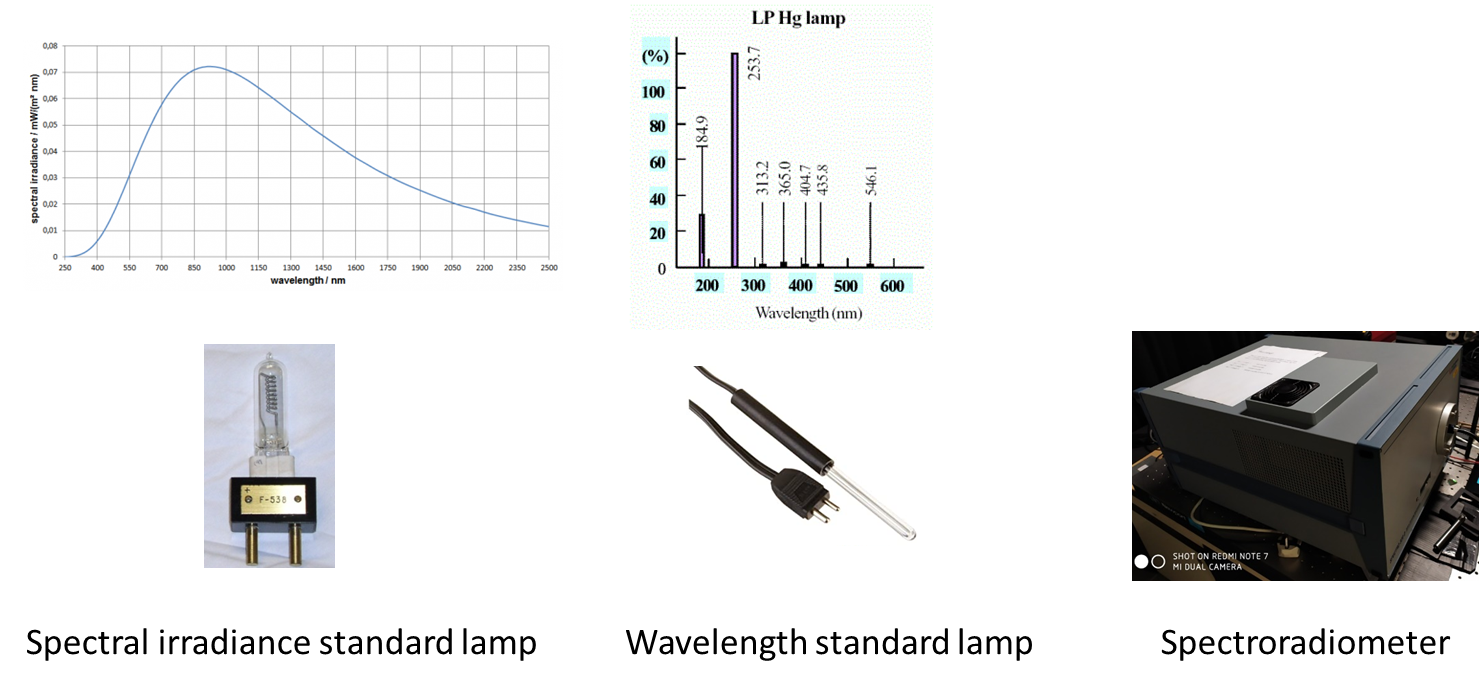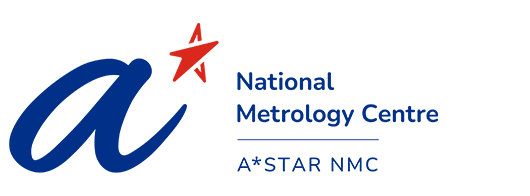Research Spotlight
Working from Home: Are the Lighting Conditions Ideal?
Author(s):
Mr. Liu YuanJie, Senior Metrologist III, Optical Metrology (OM)
The COVID-19 pandemic has changed many things, including the ways that we work and live. Many people are required to work from home during this period, and it might become a norm for years to come. Essentially, their homes have become their places of work. Very often, such home offices are not effective work stations and the physical aspects of the work environment requirements are not met. This could lead to potential implications on the safety, health, comfort, and productivity of people who work from home.
The Workplace Safety and Health Guidelines [1] published by the Workplace Safety and Health Council listed temperature, lighting, noise and ventilation as the four physical environmental factors at the workplace that can pose safety and health concerns if they are not managed properly. This article will focus on the lighting aspects of the work environment. The Singapore Standard SS 531 Code of Practice for Lighting of Work Places [2] provides detailed lighting requirements for work places.
The most important parameter of lighting condition is the lighting illuminance and its distribution over the task area of the work place. Only sufficient and uniform illumination will provide visual safety at work and visual performance needs. Table 1 lists the proposed values of illuminance and its distribution uniformity requirement of some office tasks:
| Task | Illuminance (lux) | Uniformity of illuminance |
| Filling, copying, etc. | 300 | 0.7 |
| Writing, typing, reading, data processing | 500 | 0.7 |
| Technical drawing | 750 | 0.7 |
Illuminance (measurement unit lux, or lumens per square metre) is defined as the luminous flux (amount of light, measurement unit lumen) that is incident on a surface per unit area of that surface [3]. It is the sum of lighting from all light sources, including reflections from ceilings, walls, etc. as shown in the Figure 1. The uniformity of the illuminance is defined as the ratio of the minimum illuminance to the average illuminance of the task area [2]. The task area shall be illuminated as uniformly as possible and shall not be less than 0.7.
So how is the lighting condition in your “home office”? Do you have 500 lux on your desk, or 750 lux if you are doing drawing work? Your answer is probably “not sure”. Some may claim they know because they used their mobile phones to download apps that can supposedly conduct such lux measurements. It is interesting to verify the accuracy of these apps. The Singapore Standards SS 531 specifies an accuracy requirement of 10% for the illuminance measurement.
A dark room setup as shown in the Figure 2 is used to verify the accuracy of the mobile phone “lux meter” apps.

Various types of light sources are mounted at one end and the mobile phones and a calibrated lux meter as reference are used to measure the illuminance produced by these light sources at the other end. The Mobile phones and the Lux meter take turns to measure the illuminance of a light source at the same light receiving location, one after another. The distance between the light source and the phone/lux meter is set so that the illuminance level at the receiving location is about 500 lux, the level recommended by the SS 531 for many office tasks. The verification results are presented in the tables 2 and 3.
| Illuminance (lux) of a 50W Tungsten Halogen down light bulb | Lux reading error compare to the reference lux meter | |
| Mobile Phone 1 | 880 | +76% |
| Mobile Phone 2 | 771 | +54% |
| Mobile Phone 3 | 827 | +65% |
| Reference Lux Meter | 501 |
| Illuminance (lux) of different light sources | Lux reading ratio to the reference lux meter | |
| 50W Tungsten Halogen down light bulb | 880 | +76% |
| LED lamp | 670 | +34% |
| Mini Twist CFL | 632 | +26% |
| Reference lux meter | 501 |
It can be seen from the results that the errors of illuminance measurement using these phones on the various types of lights range from 26% to 76%. This did not meet the accuracy requirements of SS 531.
In addition to providing sufficient illuminance levels, which are necessary for good task visibility, it is also important that the tasks are performed easily and in comfort. Essentially, good lighting is to ensure visual performance, visual comfort, and visual safety. i.e. to see the work place clearly and detect hazards, if any. To satisfy all these, other parameters contributing to the visual environment must be considered. Although the lights used for illumination are called “white light”, they are actually not pure white. Two parameters related to the colour aspect of the light are the colour appearance (correlated colour temperature, CCT, measurement unit Kelvin) and Colour Rendering index (CRI, Ra, maximum value 100).
The CCT of a white light is the temperature of the blackbody whose perceived colour most closely resembles the colour of the light [4]. It’s whether a light produces a ‘warmer’, yellowish visual effect like an old incandescent lamp or a ‘cooler’, bluish visual effect like daylight. White lights are usually divided into three groups according to their CCT. Warm white refers to the CCT below 3300 K, intermediate is between 3300 K to 5300 K and cool white is above 5300 K [2]. The choice of colour appearance is a matter of psychology, aesthetics and of what is considered to be natural. Warm white light is considered good for relaxing, and is therefore suitable for living rooms and bedrooms. Cool white can be better for task-based environments such as home offices, kitchen benches, and workshops where sighting of details may be required for safety and productivity. SS 531 specifies the CCT for certain tasks such as Quality Control processes to be at least 4000 K.
The CRI of a light is its colour rendering property. It indicates how well colours of objects and human skin are rendered naturally and correctly in the environment, in a way that makes people look attractive and healthy. The general colour rendering index Ra [5] is introduced to provide an objective indication of the colour rendering property of a light. The maximum value is 100. The requirement of Ra for all the three tasks discussed earlier is 80. The requirement of Ra for Quality Control tasks is 90.
Professional tools such as light wavelength standards, spectral irradiance standards and spectroradiometers are needed to measure and verify the CCT and CRI of light sources. Figure 3 shows some of these standards and equipment.
A*STAR’s National Metrology Centre (NMC) is the national measurement institute of Singapore, dedicated to advancing measurement science in support of an innovative and competitive economy. It is the custodian of national reference standards and equipment for all physical measurements.
To upgrade industry knowledge in areas where metrology is important, NMC also runs online measurement courses ranging from the general topic of “Basic Metrology and Measurement Uncertainty”, to metrology applications such as “Accurate Light Measurements”. The course aims to introduce basic metrological concepts and practical knowledge in the measurement of light sources. It covers the definitions and measurement principles of light measurement units such as luminous intensity (candela, cd), total luminous flux (lumen), illuminance (lux), luminance (cd/m2), colour (chromaticity coordinates x, y), colour temperature (Kelvin), colour rendering index, etc. The participants will also learn the working principle of instruments such as integrating sphere photometer, lux meter, spectroradiometer, etc.
Please visit MSTC courses and click on the course title for more details. Kindly register at least 2 weeks prior to course commencement to secure your place.
REFERENCES:
- 1. Workplace Safety and Health Council, in collaboration with the Ministry of Manpower. Workplace Safety and Health Guidelines - Improving Ergonomics in the Workplace. January 2014.
2. Enterprise Singapore. SINGAPORE STANDARD SS 531 -1. Code of practice for lighting of work places – Part 1 : Indoor. First published, 2006. Re-confirmed 2019.
3. CIE S 017/E ILV. International Lighting Vocabulary. 2011.
4. CIE Publication 15, Colorimetry, Third Edition. 2004.
5. CIE Publication CIE 13.3, Method of Measuring and Specifying Colour Rendering Properties of Light Sources. 1995
A*STAR celebrates International Women's Day

From groundbreaking discoveries to cutting-edge research, our researchers are empowering the next generation of female science, technology, engineering and mathematics (STEM) leaders.
Get inspired by our #WomeninSTEM

![[Thumbnail] SDSH](https://www.a-star.edu.sg/images/librariesprovider20/newsletter-articles/thumnails/thumbnail-sdsh.jpg?sfvrsn=8c26b1f2_2)
![[Thumbnail] SDSH IOT](https://www.a-star.edu.sg/images/librariesprovider20/newsletter-articles/thumnails/thumbnail-sdsh-iot.jpg?sfvrsn=2a400f25_2)
![[Thumbnails] WFH noise](https://www.a-star.edu.sg/images/librariesprovider20/newsletter-articles/thumnails/thumbnails-wfh-noise.jpg?sfvrsn=5e104e27_2)
![[Thumbnail] Clinical Thermometer](https://www.a-star.edu.sg/images/librariesprovider20/newsletter-articles/thumnails/thumbnail-clinical-thermometer.jpg?sfvrsn=18861383_2)